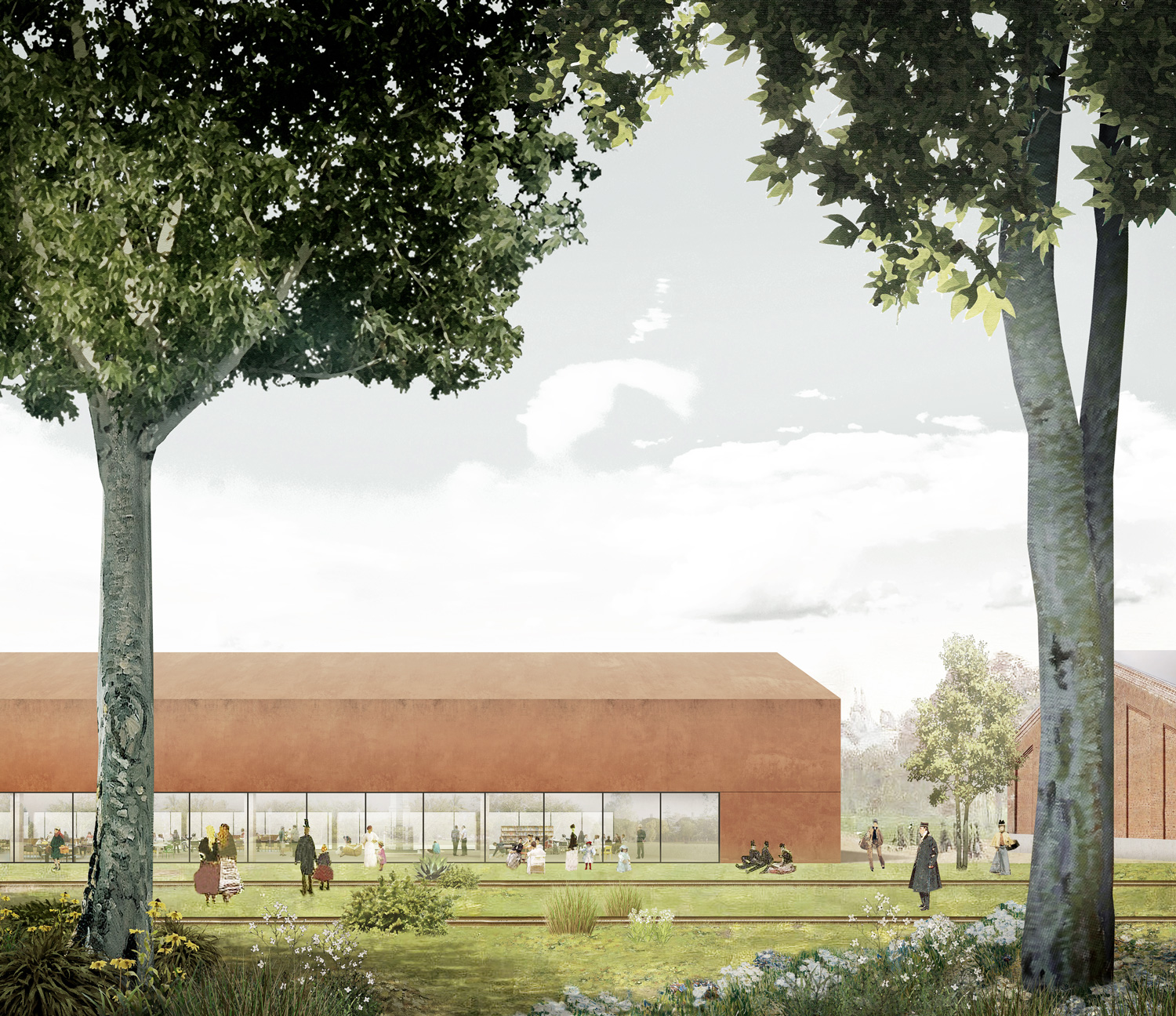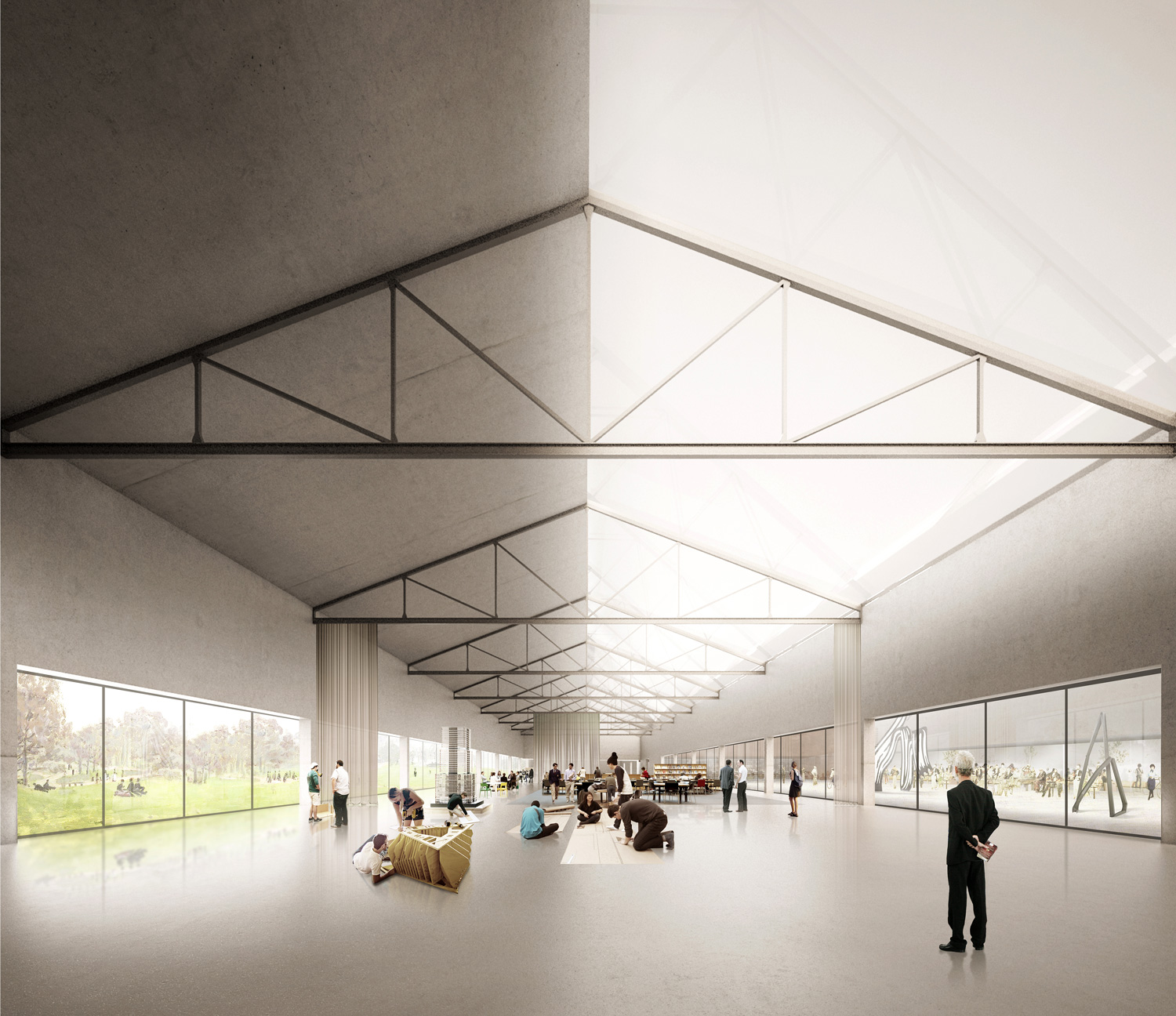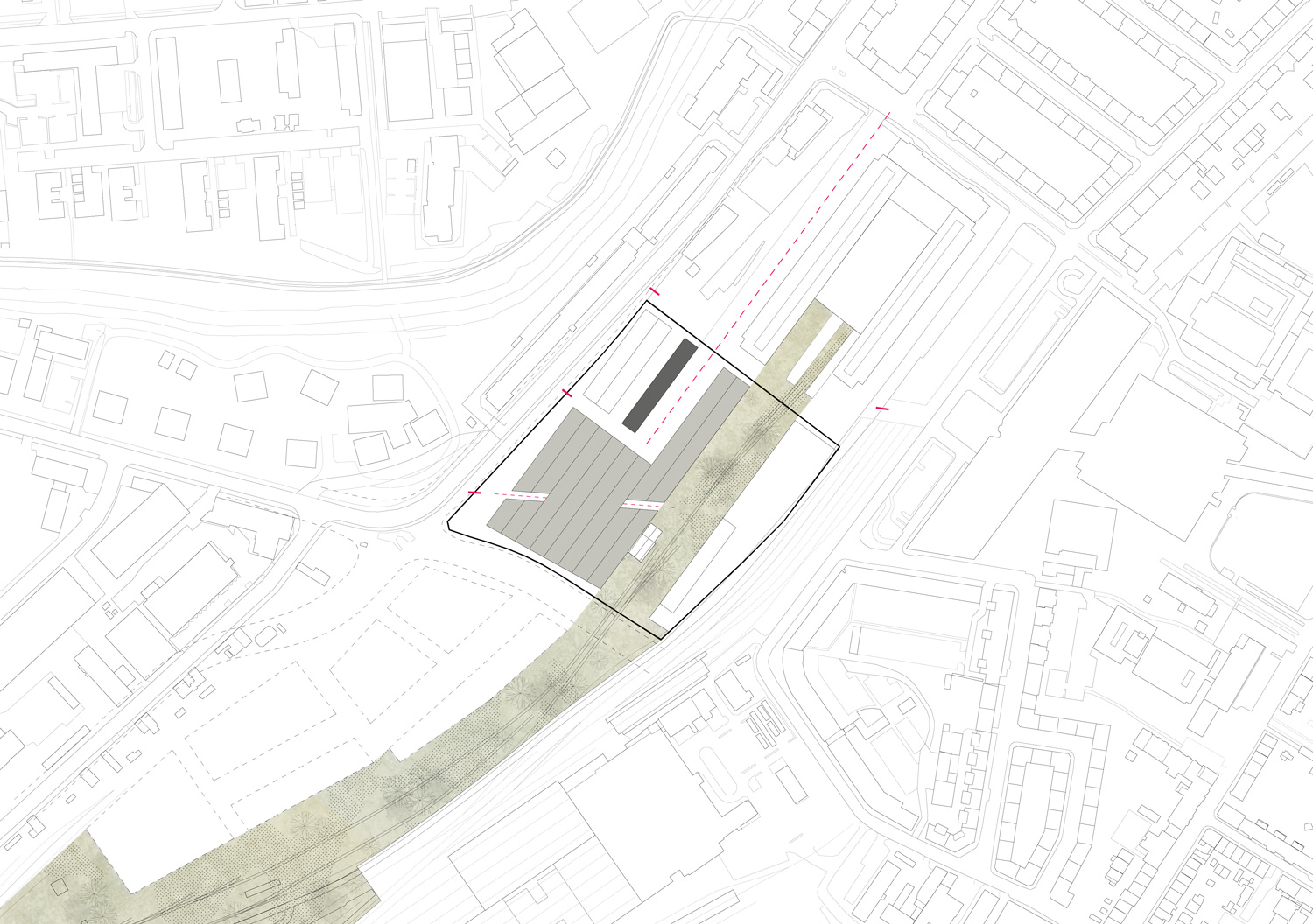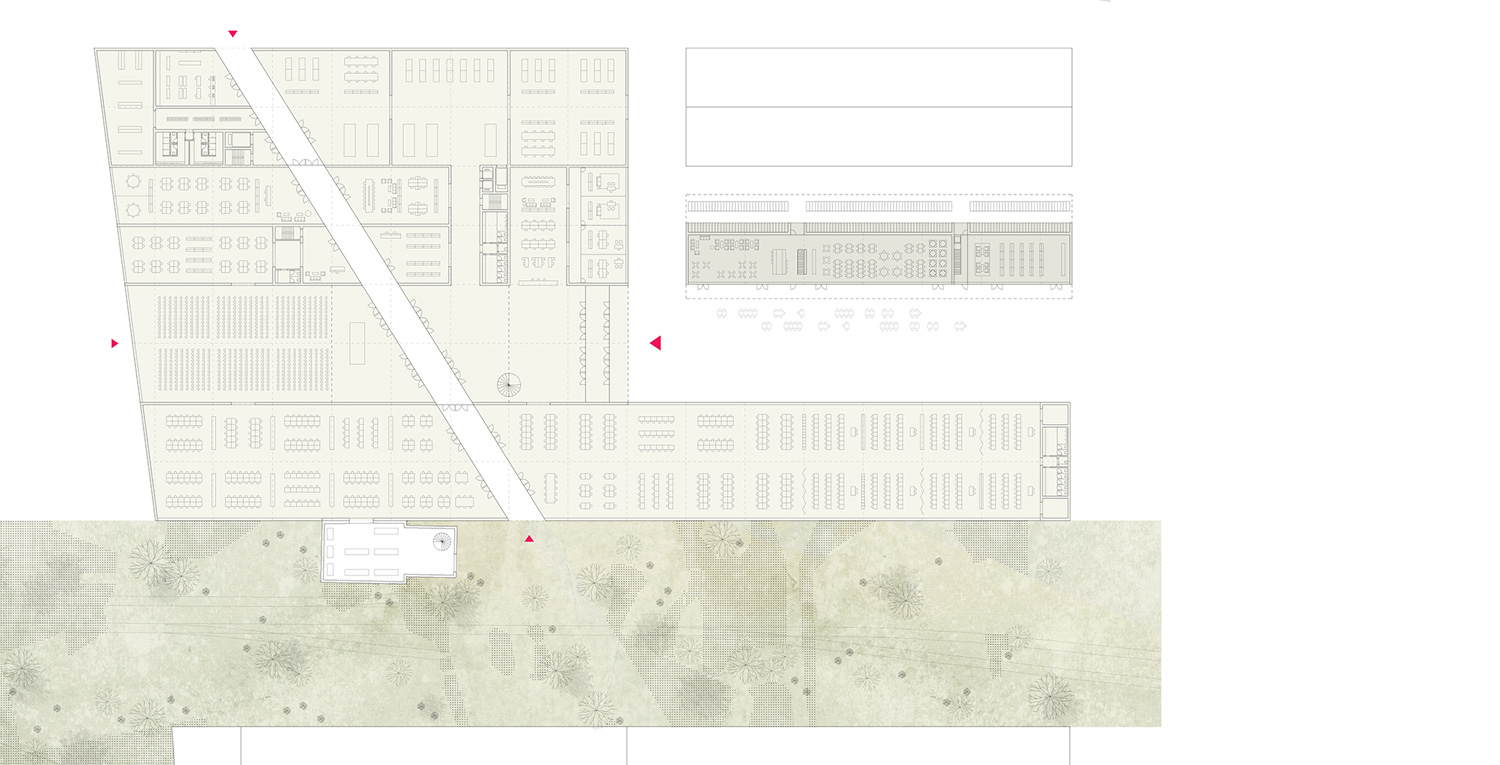1491-PPI-AAR.DK-2016
Client: Aarhus School of Architecture
Status: Competition (2016)
Clasification: Selected
Location: Aarhus, Denmark
Coordinates: 56.152392, 10.191978
Climate: Continental, Temperate
Materials: Concrete, Metal
Environments: Park, Railway, Urban
Visualizer: Studio
Scale: Medium
Types: Education, University
The new building embraces its industrial heritage by establishing a recognizable industrial archetype as the key element that defines the development of the school. It starts by anchoring to the existing structure, helping to define “the wedge” that faces the “museum”. A high-ceilinged hangar structure is set, establishing the scale for the entire school.
From here the new school is set. Its repetition establishes a new scale and a new typology, distancing from a purely mimetic exercise. A structural grid is defined, helping to hierarchize different areas but ensuring a large level of permeability and flexibility. This new structure is meant to be as light as robust and as raw as refined.
The main entrance is rooted to an axis coming from the city center and related to the museum. The new path is made by a sculpture alley – a new public space integrated in the “Aarus K” that not only connects to the Architecture School but it is also a hub for outdoor exhibitions, where artists can display and students can develop ephemeral installations.
The entrance axis establishes a structuring core. This heart is meant to be a crucial gathering space not only for students but also teachers, professionals and visitors. It includes the Common Room, the Library and the Civic Kitchen. An organic set of unified spaces, including indoors and outdoors that aspire to enhance a strong social engagement.
From this core a new transverse axis is set, connecting the Carl Blochs Gade to the Green Wedge. This path establishes a direct relation between every space, complementing a flexible matrix and assuring a dynamic flow of users. A public space that crosses the School, embodying its openness to the city and encouraging the public to visit and use it.
The building has a strong relation with the nature, enhancing the spatial qualities of the Workshops and allowing a dynamic use of indoor and outdoor spaces. The Learning Hangar is a very flexible and intense space where knowledge sharing and transparency take center stage. A typology that aims to explore an open relation with the city and the community.
Large and continuous skylights are set facing northeast seeking for a constant and diffuse light. In order to minimize resources consumption, high reflectance surfaces are used to maximize interior brightness. In the summer the trees canopies take an important filtering role on the southern façade. The sloped roofing integrates a water retention system and a bicycle parking is set near the entrance.







